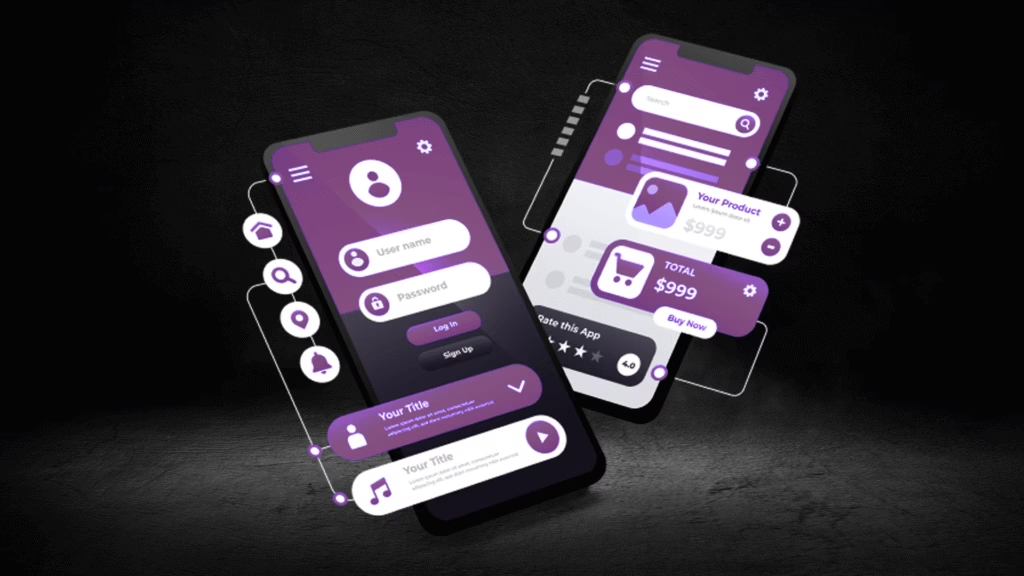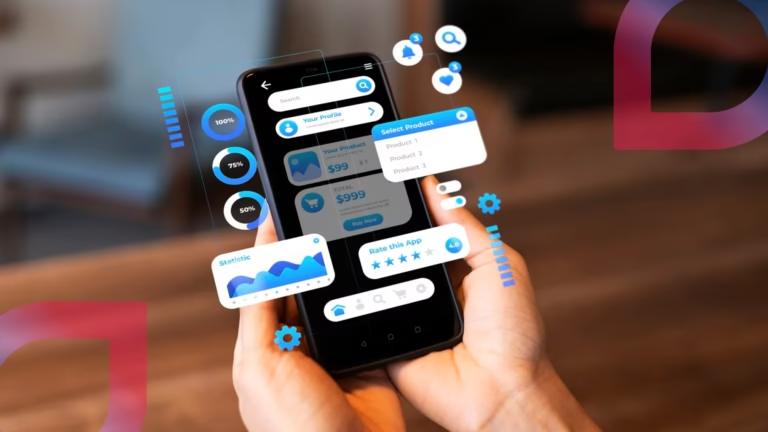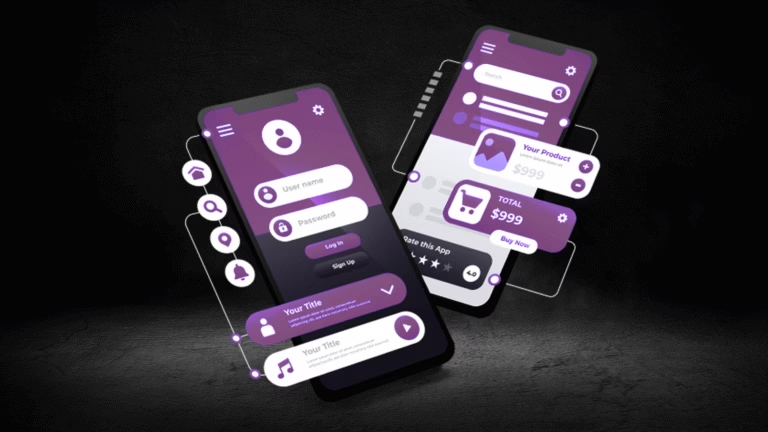Within this context, two platforms stand out as the predominant players in the mobile app development arena: iOS and Android. Developed by Apple Inc. and Google respectively, iOS and Android collectively account for a significant proportion of the global mobile operating system market share. Their widespread adoption is attributed to their robust ecosystems, extensive user bases, and sophisticated development frameworks. These features have cemented their prominence, making them the focal points for developers and businesses aiming to reach a broad audience.
This blog post aims to delve into the specific limitations encountered in the development of mobile apps for iOS and Android platforms. While both platforms offer considerable advantages and dominant market presence, they also present unique challenges that developers must navigate. By exploring these limitations, we aim to provide a comprehensive understanding of the hurdles that can impact the efficiency, functionality, and overall success of mobile app development projects. This analysis will be pivotal for developers, businesses, and stakeholders who are looking to optimize their strategies and make informed decisions in the realm of mobile app development.
Hardware and Device Fragmentation
One of the most significant factors distinguishing iOS and Android in mobile app development is hardware and device fragmentation. This refers primarily to the diversity, or lack thereof, in the devices on which the respective operating systems run. Android’s open ecosystem has led to an expansive array of devices from myriad manufacturers, each with its unique specifications. While this flexibility benefits consumers, it poses considerable challenges for developers. The variety in screen sizes, resolutions, and hardware capabilities necessitates extensive testing and optimization to ensure a consistent user experience across all devices.
Developers targeting Android must grapple with budget handsets that may have limited processing power and memory, alongside top-tier flagships that push the boundaries of what mobile hardware can achieve. The variations in these devices can affect the performance, responsiveness, and visual presentation of an app. Additionally, the multitude of Android OS versions across devices complicates compatibility further, as older versions might lack the features or stability provided by more recent updates. This fragmentation can lead to a time-consuming and resource-intensive development process, often requiring rigorous testing on a broad spectrum of devices.
In contrast, iOS benefits from a more controlled and homogeneous environment. Apple manufactures a limited number of devices, which generally share a narrow range of specifications. This harmonization simplifies the development and testing phases, as developers can predict how an app will perform across the device ecosystem with greater certainty. Nonetheless, this does not entirely exempt iOS developers from challenges. iPhones and iPads, while more uniform in design, still present variations in screen size, resolution, and processing power. Additionally, with regular hardware updates and new devices hitting the market, developers need to continuously optimize their applications to leverage the latest features and performance improvements introduced by Apple.
In the iOS vs Android debate, hardware and device fragmentation remain pivotal considerations. Both platforms offer unique challenges, requiring tailored strategies to ensure effective app performance and user satisfaction. Developers must weigh the costs of adaptation and testing complexities against the broader market reach or the stability and predictability offered by a more uniform device lineup when deciding which platform to prioritize.
Operating System Fragmentation
One of the notable challenges in mobile app development is operating system fragmentation, particularly when comparing iOS and Android. Android has a significantly larger fragmentation problem, with numerous active OS versions coexisting at any given time. This variability can complicate app compatibility and testing processes. Developers must ensure that their applications function smoothly across multiple versions and a diverse array of devices, which often leads to increased development time and costs. Furthermore, the fragmented nature of Android means that security updates and new features may not be consistently available to all users, further complicating the user experience.
In contrast, iOS presents a more streamlined approach to operating system updates. Apple’s control over both hardware and software allows for more uniform adoption of new OS versions. When a new iOS update is released, it becomes available to a majority of devices simultaneously, facilitating a more consistent user experience across the board. This unified platform can significantly reduce the complexity involved in app testing and compatibility. However, maintaining backward compatibility remains a challenge for developers, as some users may delay updating their devices, and certain older devices may not support the latest iOS versions.
Additionally, the need to achieve feature parity across different OS versions introduces another layer of complexity. On both platforms, developers must often balance the introduction of new features with the necessity of maintaining support for older versions. While Apple’s more uniform update system alleviates some of these issues, it does not entirely eliminate them. Thus, reconciling these demands requires ongoing effort and careful planning throughout the development lifecycle.
Ultimately, the issue of fragmentation underscores the importance of thorough testing and strategic planning in mobile app development. Whether dealing with the prolific fragmentation of Android or the more uniform, yet still challenging, update process of iOS, developers must navigate these complexities to deliver robust, compatible, and secure applications to their users.
Development Tools and Ecosystem
In the landscape of mobile app development, the choice of development tools plays a critical role in shaping the overall application experience and efficiency of the development process. For iOS, developers primarily utilize Xcode, coupled with the Swift programming language. Xcode offers an integrated development environment (IDE) specifically optimized for the Apple ecosystem, providing extensive debugging tools, an Interface Builder, and seamless testing capabilities. Swift, as a modern and powerful language, further streamlines development, reducing common coding errors and enhancing performance. However, Xcode’s reliance on macOS imposes a limitation, as developers must invest in Apple hardware to utilize this robust toolset.
On the other hand, Android development revolves around Android Studio, an IDE built on JetBrains’ IntelliJ IDEA, with Kotlin and Java serving as the primary programming languages. Android Studio presents a comprehensive suite of tools including a flexible Gradle-based build system, an advanced editor, and a robust emulator for various device configurations. Kotlin, while more recent than Java, enhances productivity with its expressive syntax and seamless compatibility with existing Java code. Although Android Studio runs on multiple operating systems, its complexity and resource-intensive nature can strain lower-end development machines, potentially hampering productivity.
When comparing debugging tools, iOS development through Xcode benefits significantly from tools like Instruments, which allow developers to track performance, memory leaks, and CPU usage efficiently. Conversely, Android Studio incorporates tools such as Logcat and a range of profiling tools that offer deep insights into app performance, though they can occasionally suffer from stability issues.
The libraries and software development kits (SDKs) available in both ecosystems contribute vastly to the development process. iOS developers have access to a rich repository of libraries through CocoaPods and Swift Package Manager, while Android developers rely on the extensive Android Jetpack suite, containing components like Room, LiveData, and WorkManager. Despite these resources, the fragmentation of the Android platform in terms of diverse hardware and software configurations introduces an additional layer of complexity versus the relatively uniform iOS landscape.
User Interface/Experience Constraints
Designing responsive and user-friendly interfaces poses unique constraints in mobile app development for both iOS and Android platforms. Developers and designers must navigate the distinct guidelines and customization challenges inherent to each operating system to ensure a seamless user experience.
Apple’s iOS platform is known for its stringent design guidelines. Apple provides comprehensive Human Interface Guidelines (HIG) that dictate the aesthetic and functional aspects of app design. To achieve their consistently sleek and minimalistic aesthetic, iOS apps must adhere to these pre-defined standards. While this can streamline the development process and lead to a uniform experience across devices, it also imposes significant limitations on creativity and flexibility. Developers are often restricted in terms of customization and innovation, having to ensure that their designs conform to Apple’s stringent UI requirements. The constraints are evident in elements such as navigation patterns, iconography, and even color schemes, which must resonate with the overall iOS environment to be approved for the App Store.
On the other hand, Android’s open environment allows for extensive customization options, but this freedom comes with its own set of challenges. The primary issue stems from the vast variability in device specifications, screen sizes, and resolutions. Designing an app that offers a consistent user experience across such a diverse ecosystem can be arduous. Developers must account for a wide range of devices, from high-end smartphones to budget models, each potentially influencing the app’s performance and appearance. Furthermore, Android’s Material Design guidelines offer ample freedom, but developers often find themselves balancing between following these standards and accommodating various manufacturer-specific customizations. As a result, achieving a responsive and visually appealing interface on Android requires substantial testing and adaptation.
Ultimately, while iOS vs Android presents distinct challenges for mobile app development in terms of UI/UX design, understanding these constraints is crucial for creating effective, user-friendly applications.
App Store and Play Store Policies
The policies and procedures of Apple’s App Store and Google Play Store are crucial facets to consider when focusing on mobile app development. These platforms enforce distinct sets of rules that can significantly influence the development, deployment, and maintenance of applications.
Apple’s App Store is known for its rigorous app submission process. Before an app can be published, it must undergo a stringent review to ensure compliance with Apple’s guidelines. This review process often includes an evaluation of the app’s functionality, security, and user experience. The acceptance criteria are strict; apps must adhere to design standards, adhere to privacy policies, and avoid objectionable content. Review times can vary but typically extend up to a week or more, which can impact the overall timeline for launching an app.
In contrast, Google Play Store’s submission process is relatively more lenient. Google’s policies are generally more flexible, allowing quicker updates and fewer rejections. However, this leniency can come at the cost of lower security and quality control. The average review time on Google Play Store is shorter, often taking just a few hours to a couple of days. This expedited process allows developers to deploy and iterate on their applications more swiftly.
Understanding these policy differences is crucial, as the complexities of obtaining and maintaining approvals can vary between the two ecosystems. For instance, sustaining an app on the App Store requires continuous adherence to evolving guidelines, which can necessitate frequent updates. On the Play Store, while updates are easier to manage, the potential for increased competition and lower barriers to entry could present additional challenges.
In sum, when determining the strategy for app deployment, it is essential to account for these policy implications. The intricacies of Apple and Google’s stores can shape the development timeline, the degree of maintenance required, and the overall market strategy for the application. Recognizing and navigating these store-specific limitations is imperative for achieving successful app deployment in the highly competitive landscape of mobile app development.
Security and Privacy Considerations
In the realm of mobile app development, security and privacy remain paramount concerns. For iOS developers, Apple’s stringent guidelines are dual-edged. On one hand, these rigorous standards create a highly secure and privacy-focused environment. All apps must adhere to Apple’s App Store Review Guidelines, which include comprehensive requirements for user data protection and app security protocols. Apple’s closed ecosystem, where the hardware and software are tightly integrated, further enhances the built-in security features. This vigilance ensures user data remains safeguarded against breaches, offering peace of mind to both users and developers. However, these extensive guidelines can often become a restrictive barrier, slowing down the app development process and limiting creative freedom. Developers are sometimes required to implement complex measures that add to the development time and cost.
On the other side of the iOS vs Android debate, Android’s more flexible environment fosters innovation but also transfers greater responsibility to developers. Android, with its open-source nature, provides developers more latitude to craft unique and customized applications. Yet this freedom comes with increased accountability for ensuring app security and user privacy. The diverse Android ecosystem, with its multitude of device manufacturers and customized ROMs, introduces a wider array of potential vulnerabilities. Developers must, therefore, employ robust security measures such as regular updates, thorough code reviews, and advanced encryption techniques to mitigate risks. Additionally, the higher presence of third-party app stores on Android further complicates the landscape, making it imperative for developers to be vigilant about where their apps are distributed.
Mobile app development in both iOS and Android has its unique set of challenges concerning security and privacy. While iOS’s stringent ecosystem provides a solid foundation for protecting user data, it can also impose limitations on development flexibility. Conversely, Android’s open nature offers creative freedom but demands proactive security measures from developers to ensure app integrity and user privacy. Balancing these aspects is crucial for developers navigating the intricate landscape of mobile app development.
Conclusion: Navigating the Limitations
The contrasting ecosystems of iOS and Android come with distinct limitations that developers must navigate. While iOS offers a consistent and streamlined development environment, its walled garden approach can stifle customization and flexibility. On the other hand, Android’s open source nature encourages innovation and customization but comes with fragmentation issues and varied device compatibility, affecting consistent performance.
To effectively manage these challenges, developers need to consider their project requirements and target audience. For projects necessitating a controlled environment, high security, and seamless integration with other Apple products, iOS stands out as the ideal choice. Its stringent app store policies ensure high-quality applications, although this can extend development time and complicate approval processes. Conversely, for applications aiming at a broader demographic, with emphasis on customization and innovation, Android’s extensive reach and open-source flexibility are beneficial despite the pitfalls of fragmentation.
Resource constraints also play a significant role in the decision-making process. iOS development typically requires investment in Apple hardware and adherence to proprietary software guidelines, potentially increasing costs but providing a more streamlined development experience. Android development may be more cost-effective initially, leveraging multiple development tools and resources, yet can incur higher maintenance costs due to its extensive device diversity.
Looking ahead, advancements in mobile app development promise to ease these limitations. iOS and Android continue to evolve, with both platforms integrating more cross-platform development tools and striving to enhance security, performance, and user experience. Emerging technologies like AI, AR, and IoT are expected to further bridge the gap, offering developers new avenues to innovate while overcoming existing limitations.
Ultimately, the decision between iOS and Android hinges on a careful assessment of project demands, audience needs, and resource availability, ensuring optimal strategic alignment with development goals.








